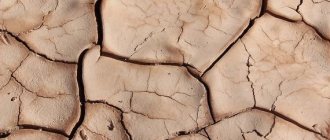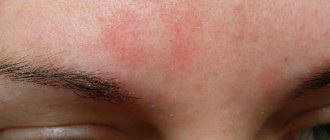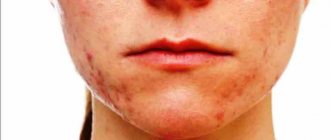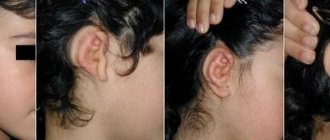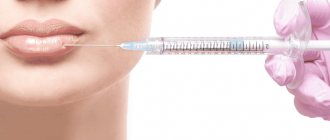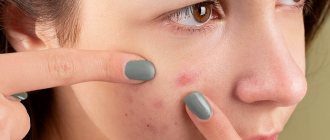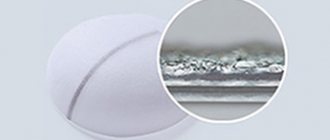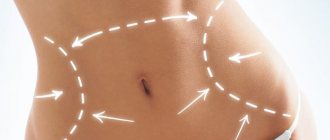The term “diathesis” in domestic medicine refers to a feature of the body’s constitution, which is expressed in a predisposition to certain diseases. Usually, diathesis refers to allergic diathesis, the most common and easily diagnosed. According to various sources, diathesis occurs in 30-75% of children.
Unlike allergies themselves, diathesis is not associated with functional disorders of the immune system. An allergic reaction during diathesis in infants is usually explained by the characteristics of the child’s body. In children of the first year of life, the protective function of the intestine is reduced: the intestinal walls are thin, the amount of enzymes and antibodies produced is small. As a result, the child’s body may not be able to cope with a large number of highly allergenic foods and give an allergic reaction. By two to three years, the amount of enzymes becomes sufficient, and diathesis in most cases goes away.
Symptoms of diathesis
Inflammation of the skin during diathesis is the body's reaction to contact with an allergen. The main way an allergen enters a child’s body is food, but a reaction to contact with the skin of the allergen is also possible (the allergen, for example, can be components of washing powder that get on clothes during washing, plant pollen, dust, animal hair, etc.).
Diathesis in children under 3 months of age
The first manifestations of diathesis most often appear at the age of 2-3 months. This:
- diaper rash that does not disappear even with careful care;
- profuse prickly heat with mild overheating;
- sebaceous crusts of gray-yellow color on the head in the hairline area (seborrhea).
Diathesis in children aged 3 months and older
In older children, a typical manifestation of diathesis is red spots on the cheeks. As the condition worsens, the skin becomes crusty. The crusts become wet, the child experiences discomfort, itches, becomes excitable, sleep and appetite may be disturbed, and loose stools may appear.
Causes of congenital facial asymmetry in children
Congenital facial asymmetry in children is usually associated with developmental abnormalities of the skull bones and connective tissue. The cause may be intrauterine injuries, fetal presentation, torticollis, pathologies of the formation of bone and cartilage tissue caused by intrauterine infections. Sometimes congenital facial asymmetry is caused by rare genetic pathologies associated with chromosome mutations, for example, Wolf-Hirschhorn syndrome.
Like any skeletal anomalies, facial asymmetry in all these cases is well corrected by osteopathic treatment in combination with therapeutic massage.
Methods of treating diathesis
When dealing with diathesis in a young child, the main thing is to choose the right diet, excluding foods that may cause an allergic reaction.
For a child in his first year of life, it is very important to receive breast milk.
The proteins of human milk are easily broken down by the baby's enzymes and are completely devoid of allergic properties. However, a nursing mother must also follow a diet excluding fish, poultry, tomatoes, chocolate, smoked meats, spices and other allergenic foods.
When mixed feeding, the child should not be given some juices: orange, carrot, tomato. Introduce any new product carefully - from a small amount. It is important to prevent an allergic exacerbation, and at the same time, to give the baby’s body everything it needs for its development.
Specialist consultation
The Family Doctor pediatric allergist-immunologist will help you deal with your child’s skin problems, determine the cause of allergies, and also build a rational diet that is suitable specifically for your child.
Make an appointment Do not self-medicate. Contact our specialists who will correctly diagnose and prescribe treatment.
Rate how useful the material was
thank you for rating
Hirschsprung's disease in children: no need to panic
Many genetically determined diseases are incurable, but there are lucky exceptions. For example, Hirschsprung's disease in children. Mikhail Yuryevich Kozlov, head of the surgical department of the Morozov Children’s Hospital, coloproctologist, pediatric surgeon of the highest qualification category, candidate of medical sciences, holder of the “Moscow Doctor” status, spoke about how this disease manifests itself, why it is dangerous and how it should be treated.
What do parents need to know about Hirschsprung's disease?
This is one of the most severe congenital defects of the colon, but it is curable. At certain stages of embryonic development, the wall of the colon does not receive a normal structure, that is, nerve ganglia (clusters of nerve cells) are not formed in it. As a result, the intestines do not perform their normal functions. The cause of the disease is a genetic failure. Changes in chromosomes can be either hereditary or spontaneous. Fortunately, the disease is quite rare: 1 case in 5,000 newborns. Today, the likelihood of having a child with Hirschsprung's disease can be determined using a genetic test. This is especially true if there has already been a case of this disease in the family.
What symptoms suggest Hirschsprung's disease?
The absence of nerve ganglia (or their deficiency) leads to the fact that the intestinal wall does not stop - it cannot push feces towards the exit. A condition arises that is popularly called constipation, and we, doctors, talk about stool retention. This is the main manifestation of Hirschsprung's disease. However, everything is individual: if for one child going to the toilet 3 times a day is considered the norm, then for another, stool 2 times a week will not be a deviation. Provided that such stool retention is not combined with other clinical manifestations. But progressive constipation, along with a lack of appetite, bloating and developmental delays in a child, is already a reason to immediately consult a doctor to rule out Hirschsprung’s disease at an early stage.
What does Hirschsprung's disease lead to if left untreated?
The consequences of the disease are extremely severe. If the child is not operated on in time, he will stop going to the toilet, a large amount of feces will accumulate and his colon will overstretch. As a result, chronic fecal intoxication will occur: the stomach will begin to swell, appetite will disappear, and vomiting will appear. If a child has been suffering from this problem for a long time, then, against the background of intoxication, by the age of 3–4 years of life he will develop encephalopathy with all the ensuing consequences: developmental delay, uncontrolled psycho-emotional behavior, problems with attention, etc.
Is Hirschsprung's disease currently curable?
Yes, 100%, but we are talking exclusively about surgical treatment. Hirschsprung's disease is not a case where some mythical drops will help; it can only be treated by surgeons. The operation is called "single-stage laparoscopic colon resection." For the first time in Russia, we performed this operation at the Izmailovo Children's Hospital back in 2004, and at the Morozov Hospital we have already continued to improve this technique. Since then, we have successfully operated on more than 700 children, and our hospital is one of the most advanced in terms of treating this disease.
The essence of the operation is extremely simple: laparoscopically, that is, through three small punctures on the anterior abdominal wall, the aganglionic (i.e. non-functional) section of the colon is excised, its healthy part is lowered down and sutured, roughly speaking, to the butt. Then a direct anastomosis is performed, without any stoma (an artificial opening between the intestinal cavity and the environment). The surgical intervention is performed under general anesthesia with the obligatory addition of epidural anesthesia in order to minimize the use of narcotic analgesics in the child in the immediate postoperative period. On average, a small patient stays in the hospital for no more than two weeks.
All parents are concerned about the question of how safe such an operation is for the child, since during it about 40 cm of the colon can be removed?
Theoretically, any operation, even banal removal of a wart, can have complications for the body. As for one-stage laparoscopic colon resection, over 16 years of experience in our clinic using modern equipment, we have perfected the surgical technique. Therefore, the risk of postoperative complications is 0.5-1%. Judge for yourself: if at the stage of mastering the technique the operation lasted 3–4 hours, today it takes no more than 40 minutes. In this case, two medical teams work simultaneously: one from the abdominal cavity performs the laparoscopic stage, the second from the perineum performs the perineal stage.
After laparoscopic surgery, is Hirschsprung's disease cured forever or will the child need some more treatment throughout his life?
Yes, after a competently performed laparoscopic resection of the colon in one stage, the child no longer needs any surgical intervention and leads a normal life. The only exceptions are secondary patients. Our colleagues in the regions are mastering this technique, but the level of equipment or experience does not always allow it to be performed flawlessly. Recently, we have had a sharp increase in the number of repeat operations: children are being admitted who have already been operated on 2-3 times. But repeated reconstructive surgical interventions are more dangerous in terms of the number of complications and the postoperative result is no longer so ideal.
Can you share the most interesting case from your practice related to Hirschsprung's disease in a patient?
For the operating surgeon, every case is interesting, and it cannot be otherwise. But the most memorable is, of course, the very first patient. For me, this was a boy named Ilya, who was successfully operated on in 2004. Now he is already an adult young man who is preparing to enter a university. He is absolutely healthy and leads a full life. Therefore, I want to give only one piece of advice to all parents: don’t panic! You just need to operate on the child as soon as this disease is detected. Diagnosed with Hirschsprung's disease in a month? This means that we need to operate within a month. If diagnosed in a year, it is necessary to operate in a year. Don't wait and don't be afraid.
Can only Muscovites undergo surgery at the Morozov Hospital in Moscow, or is it also available for children from other regions of Russia?
In our hospital, this operation is performed free of charge for all residents of Russia under the compulsory medical insurance policy! The main thing is to contact us for help in a timely manner.
Source: Moscow - the capital of health
Prevention measures
Complete recovery is possible only with early identification of factors and their exclusion from the diet. By following nutritional recommendations, relapses of the disease can be prevented. Some children experience spontaneous recovery as oral tolerance increases. Many people “outgrow” the disease, but you shouldn’t count on it.
Treatment of food allergies
Currently, the only remedy against the negative effects of the provoking factor is the exclusion of the dangerous substance from the diet. This recommendation seems simple, but far from reality. A proper diet requires constant monitoring to avoid exposure to present and hidden antigens that appear in processed foods. It is recommended to study the composition when dishes are prepared outside the home to avoid accidental contact with antigens. Unfortunately, not everyone succeeds in eliminating contact.
In recent decades, special treatment methods have begun to be developed aimed at changing the immune response and acquiring oral tolerance. These methods are known as oral desensitization or allergy vaccines, which may show promise for specific reactions to milk, peanuts, and eggs. To get individual treatment recommendations, contact your pediatrician or allergist.
Possible complications
The danger is that this condition gradually worsens if no measures are taken over time:
1. First, against the background of sensitization, the body develops dermatitis.
2. Then the respiratory system is damaged in the form of atopic rhinitis.
3. If the antigen is not excluded, then bronchial asthma manifests itself.
The most dangerous complication is anaphylactic shock. It develops rapidly – 1-3 minutes after contact with the antigen. It is characterized by bronchospasm, laryngeal edema and collapse, which can be fatal if not treated promptly.
